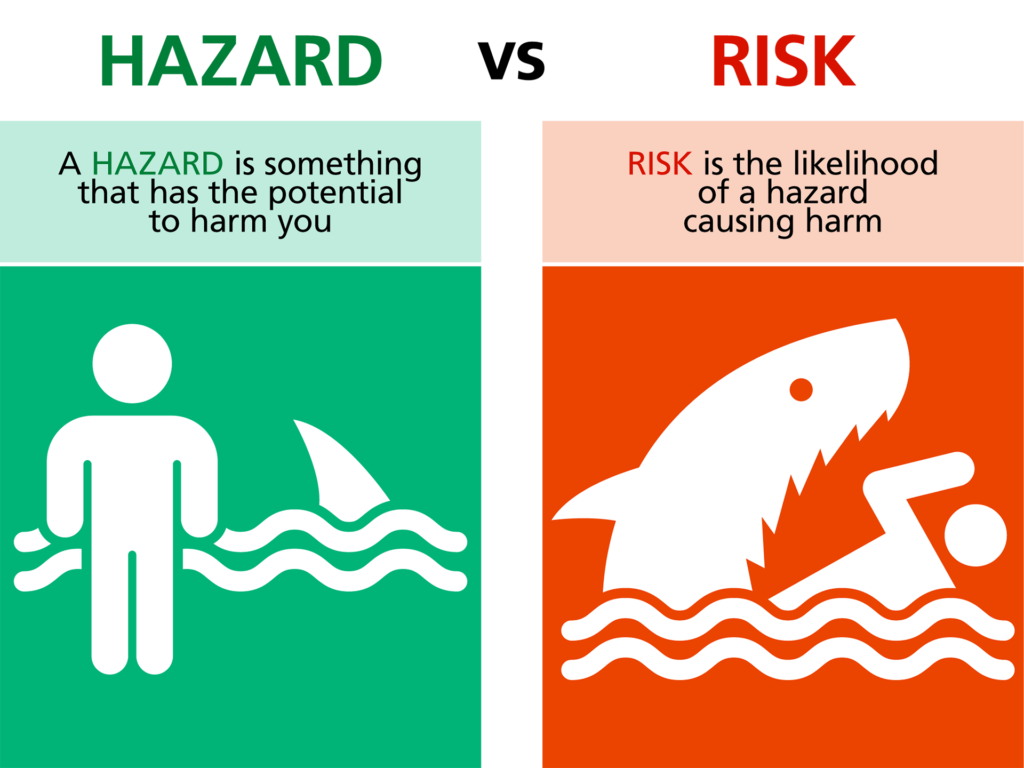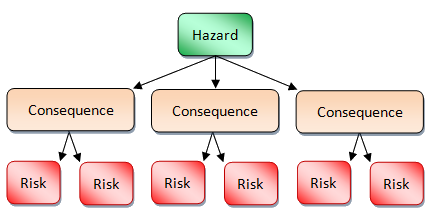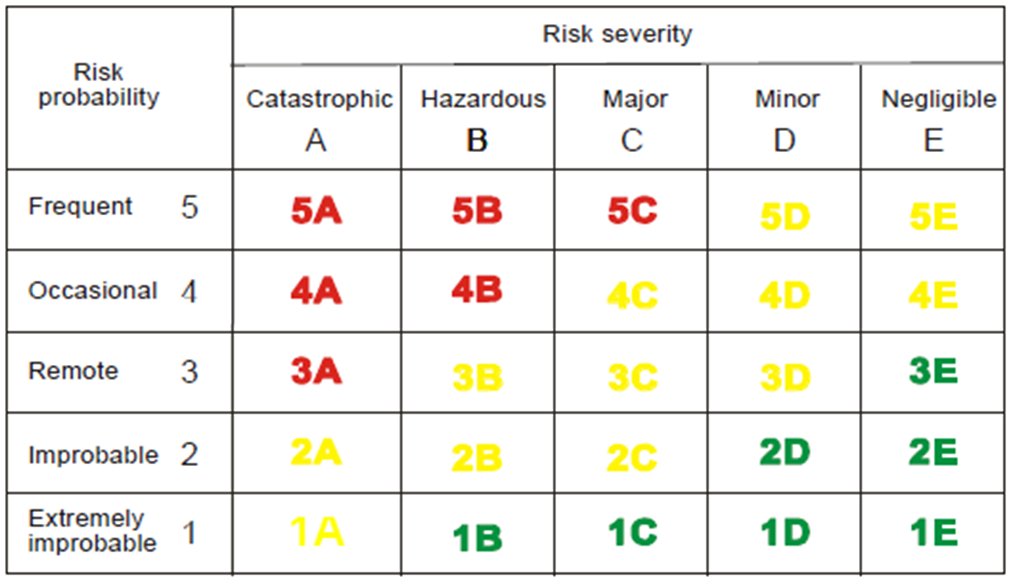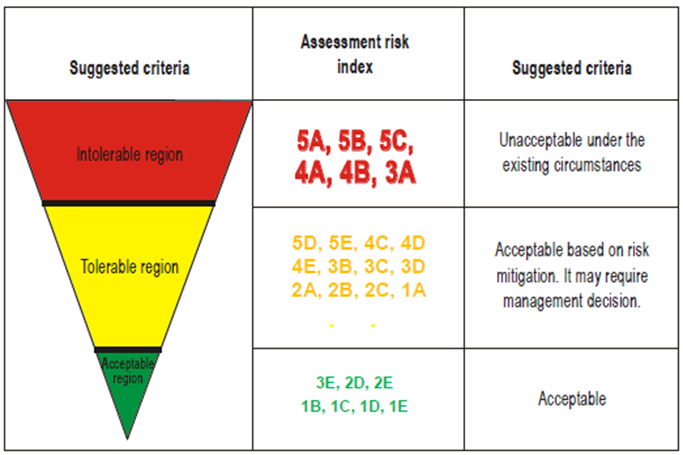We live in a world full of hazards that have the potential for causing injuries, damage to property, loss of materials, or reduce our ability to perform. The key word is potential for hazards. We hardly recognize many significant hazards because we are so used to accepting them in our daily activities. I’ll use driving a vehicle as an example, but the application of these principles can be used in everything we do.
Driving has multiple hazards which can change with location, roadway type, vehicle type, driver ability, environmental conditions and even time of day. We live with those hazards and try to control what we can. We also tolerate the aspects we can’t control, such as the actions of other drivers. But what can we do about hazardous conditions, like snow and ice on the road? We can’t control that… or can we?
Calculating the Risk
It is not uncommon to hear people in Seattle say it’s too risky to drive in the snow. So, is snow and ice on the road a hazard or is it a risk? What’s the difference? To begin, snow is the condition that has potential consequences, and that is the hazard. Snow and ice reduce tire traction leading to reduced operator control. Some possible outcomes (consequences) of reduced control are sliding off the road, or into other cars causing damage and injury. Risk is the probability and the severity of those outcomes.
It is also true that the risks are either acceptable to you, or not. It’s a choice. People in colder climates drive in snowy conditions all the time, mostly without consequence but in Seattle in similar conditions many will decide stay home because they do not have that confidence in their experience, ability, or vehicle. How do you make that choice?
Hazard or Risk? What about Consequence?
In our modern usage the words Hazards and Risk have almost become synonymous. But there is a distinction that we should be aware of and knowing the difference can help bring clarity to your decision making.
- Hazard – Condition or object with the potential of causing injuries to personnel, damage to equipment or structures, loss of material, or reduction of ability to perform a prescribed function
- Consequence – Potential outcome(s) of the hazard
- Risk – The assessment, expressed in terms of predicted probability and severity, of the consequence(s) of a hazard taking the worst foreseeable situation.
- Probability is the likelihood that an unsafe event or condition might occur. In many ways this can be intuitive, as the probability of sliding off the road is higher during snow and ice conditions than it is when the road is dry.
- Severity is the possible effect of the unsafe condition in a worst foreseeable situation. If your drive to work is relatively flat and straight the severity of sliding off the road may lead to a damaged fender, wounded pride and some insurance hassles. If your drive to work is along a windy steep slope above an ice filled river, the outcome severity of sliding off the road may be catastrophic.
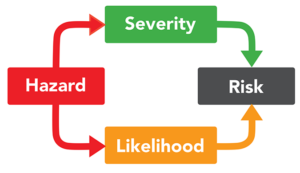 A single Hazard (Snow on the Road) can have multiple Consequences, (Slide off the road, collision with another car, getting stuck) and each potential Consequence can have multiple Risks associated with it as well. Risks may be monetary (insurance rates, damage repairs, medical bills), Risks may be reputation (bad driver in snow, lack of trust), Risks may be health (injuries, recovery, death), or Risks may be the ability to continue operations after the fact, especially by definition following a catastrophic event.
A single Hazard (Snow on the Road) can have multiple Consequences, (Slide off the road, collision with another car, getting stuck) and each potential Consequence can have multiple Risks associated with it as well. Risks may be monetary (insurance rates, damage repairs, medical bills), Risks may be reputation (bad driver in snow, lack of trust), Risks may be health (injuries, recovery, death), or Risks may be the ability to continue operations after the fact, especially by definition following a catastrophic event.
The Risk of driving to work in the snow is the combination of likelihood and severity. Either that risk is acceptable to you, or it is not. Some think of risk as a purely economic decision. Does the cost of a hazard’s consequences when combined with the likelihood and severity outweigh the gain to be found by accepting the risk?
Anyone who has ever been a teenager understands making poor decisions because they don’t take a moment to first evaluate the potential adverse outcomes. My parents called it a lack of impulse control, and I was no exception. The lack of judgement, experience, and fore-thought make being a teenager a hazard in itself. What they lack are the tools for making better decisions.
A Decision Chart
A Risk Matrix chart can be that tool. It can help to visualize the concept of Risk and provide a scoring system to understand the level of Risk involved with every day activities.
If the Risk score is anywhere in the Red, it wouldn’t be prudent to continue until additional measures and controls can be in place to reduce the severity and probability to acceptable levels. If the Risk score is in the yellow, you may continue with the moderate risk, but further controls and monitoring would be advisable. If conditions worsen, or controls aren’t effective, the risk may move back up to the red zone. If the Risk score is in the green the risk level is acceptable and you can proceed as planned. That’s not to say that something bad won’t happen, because we can never eliminate bad outcomes, but if it goes south on you the consequences would most likely be acceptable. The potential gains outweigh the risk involved and the existing controls and mitigations are sufficient to keep the risk manageable.
Whenever you create a control to mitigate a risk to an acceptable level there is a cost. If you’re willing to drive in the snow, but want to reduce the risk of losing traction, you might decide to put chains on your tires. Anytime you introduce a control to reduce risk there is a cost, but the costs should be as low as reasonably possible. Chains alone won’t guarantee you arrive at your destination in a snow storm, but with a moment of consideration for the conditions, hazards, and risks involved you’ll improve the chance of surviving the day intact. And sometimes the prudent choice is just not to do anything until conditions outside of your control improve.
Safety Decision-Making
Improving safety, no matter what the task or situation, involves systematic approach of identifying the hazards, anticipating potential consequences, assessing the probability and severity to determine your Risk Score, and weighing that against your appetite to accept that risk. And that’s the difference. A hazard is the condition that exists. A hazard has potential consequences. The Risk is the probability and severity of the worst foreseeable consequences. What you do with that information is determined by your risk appetite.

